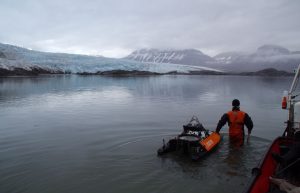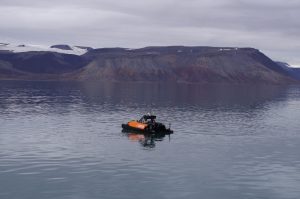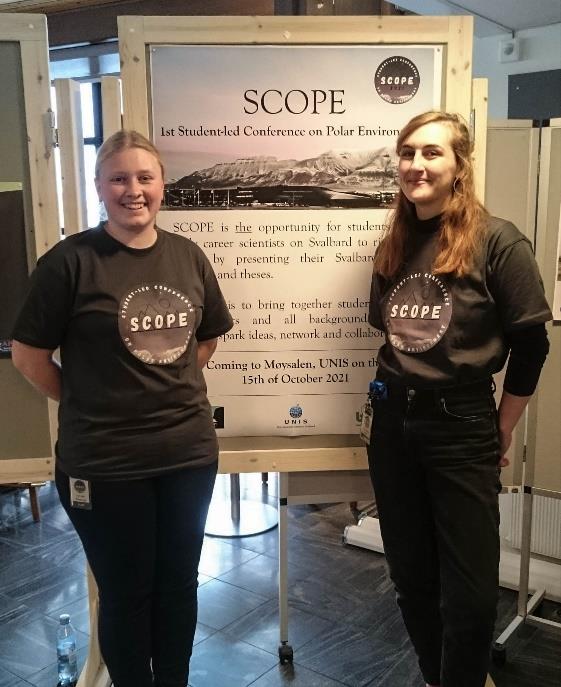Investigation of spatiotemporal impacts of climate change on Arctic fjord biodiversity – A UNISprout Field experience report
by Samira Terzenbach
UNISprout is a bioCEED initiative that provides Bachelor students with the opportunity to gain fieldwork experience by helping PhD or Guest Master students with their research project. This summer, Samira Terzenbach joined PhD student Victor Gonzalez Triginer and Guest Master student Milan Beck out on Billefjorden where they used an unmanned surface vehicle (USV) to investigate spatiotemporal impacts of climate change on Arctic fjord biodiversity.
It‘s 7:56, I’m sitting in front of Victor’s office. In the hallway, two dark pelicases wait on a trolley, equipped with a field notebook, a converter, paper towels, and more. After a short talk with logistics, we grab our survival suits, load the car, and head down to the harbor. Near the road, a small black trailer is parked next to a big white one. We get more equipment out of the field trailer and take the small one with us to the robust UNIS Polarcirkel boat.  Inevitably, we end up parking in a huge mud puddle which makes loading the boat, jumping in the suits, and carefully carrying the project’s treasure into the water instantly more challenging. Once onboard, we tie up the orange USV and head out to Billefjorden, all the way in, to where Nordenskiöldbreen meets the icy waters. After installing the batteries, checking that everything is in place, and heaving the USV into the water, it basically is a one-man’s job.
Inevitably, we end up parking in a huge mud puddle which makes loading the boat, jumping in the suits, and carefully carrying the project’s treasure into the water instantly more challenging. Once onboard, we tie up the orange USV and head out to Billefjorden, all the way in, to where Nordenskiöldbreen meets the icy waters. After installing the batteries, checking that everything is in place, and heaving the USV into the water, it basically is a one-man’s job.
While Victor remotely maneuvers the robot boat along the 5 m depth isocline, recording the echosound and CTD data on its way and stopping every now and then to take footage with the drop camera, Milan and I chat about the project. It is part of FACE-IT, an EU project which I already got interested in back home at the hosting University of Bremen. The study investigates the importance of land influx and cryosphere changes for marine biodiversity and abundance, with a focus on littoral fish and macroalgae communities.
In times of climate change, the decline of sea-ice and sea-terminating glaciers in the Arctic, are assumed to impact the ecosystem’s diversity and its functioning in the littoral fjord areas of Spitzbergen. The increasing influx of Atlantic waters, the so called Atlantification, moreover, brings along invasive species that may compete with native Arctic species.
While we are sipping our tea, we suddenly spot a female polar bear with two cubs in the distance. As they take to the water, not swimming straight at us, but observing us constantly, we decide to take out the USV and leave to another sampling area. Around 15:20 the batteries run low and force us to abort the sampling.

The drive back, re- and unloading, rinsing everything with fresh water, etc. takes us another two hours, so we call it a day and agree to take a look at the processed data together some other time, for me to gain a more comprehensive understanding of measurements. Back home, I can still feel the slight rocking of the boat and am very satisfied after such a nice time out in the field!




